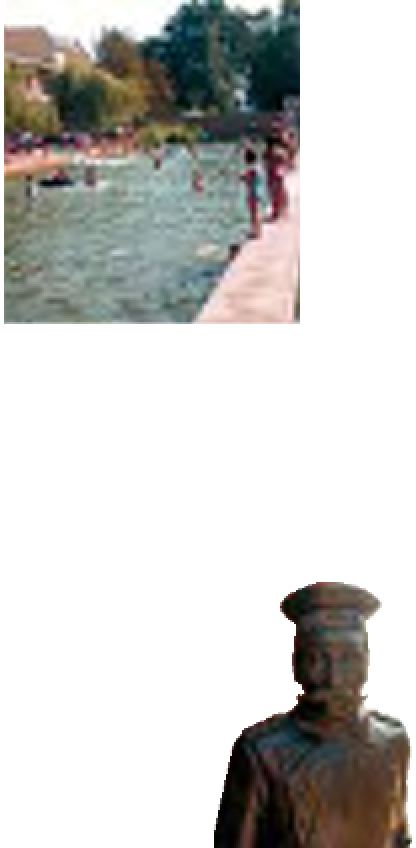Travel Reference
In-Depth Information
Köpenicker Schloss
The Köpenick palace, which
is situated on Schlossinsel
(palace island) in the south of the
district, was built in 1677-81 to
plans by the Dutch architect
Rutger van Langervelt for Fred-
erick, heir to the throne and
future King Frederick I. In the
17th century, the charming
Baroque palace was extended
by Johann Arnold Nering and
others. Today it houses part of
the collections of the Berliner
Kunstgewerbemuseum (arts and
crafts museum)
(see p47)
.
d
Schlossinsel
•
Phone for opening hours
(030) 20 90 55 55
Pool in Köpenicker Altstadt
Köpenicker Altstadt
Köpenick is a small, quiet,
self-absorbed world. This island
community has a venerable
history: as early as the 9th
century, people had settled on
Schlossinsel. The former fishing
village stayed independent until
1920, and its coat of arms still
features two fish, as do
many of the house façades.
The Old Town, on the banks of
the Dahme River, is still char-
acterized by cobbled streets
and low fishermen's huts
from the 18th and 19th
centuries, taking the
visitor back in time.
Schüßlerplatz, Grün-
straße and Alter
Markt, too, still have
some older buildings.
Old Köpenick became famous on
16 October 1906. Wilhelm Voigt,
a homeless man dressed up as a
captain, commanded a troop of
soldiers, marched into the town
hall, arrested the mayor and con-
fiscated the municipal coffers.
Today the “Hauptmann von
Köpenick” (Captain of Köpenick),
who later became a popular folk
figure, is commemorated by a
statue in front of the Rathaus
(town hall). The vast red-brick
structure, dating from 1901-4, is
a typical example of Gothic brick
architecture from Brandenburg
province.
d
Rathaus: Neue Krugallee 4
•
8am-6pm Mon-Fri
•
(030) 617 20
Gedenkstätte
Normannenstraße
The former headquarters of
the much-feared “Stasi ,
East Germany's secret
police, is now a memorial,
commemorating the
thousands of victims
of the East German
regime and of Erich
Mielke, the minister in
charge of the secret
police. Visitors can see
his offices, the
canteen and various
pieces of spying equipment,
revealing the methods used by
the Socialist big-brother regime.
d
Ruschestr. 103, Haus 1
•
11am-6pm
Mon-Fri; 2-6pm Sat, Sun
•
(030) 553 68
54
•
Admission charge
Hauptmann von Köpenick
Deutsch-Russisches
Museum
World War II ended here on
8 May 1945, when Germany
signed its unconditional sur-
render. Documents, uniforms
and photographs, displayed in
the former officers' casino,
relate the story of the war.
d
Zwieseler Str. 4
•
10am-6pm Tue-Sun
•
(030) 50 15 08 10
•
Admission charge
145










